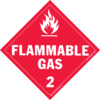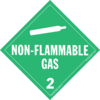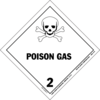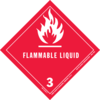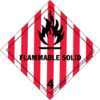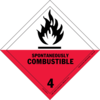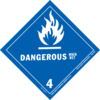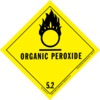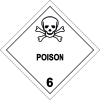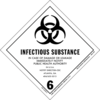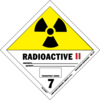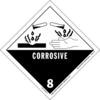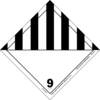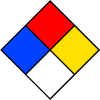Hazardous goods / Kemler figure / UN number
Dangerous goods classes
The complete listing of UN number as well as classes of dangerous goods can be viewed under: http://www.gifte.de/Gefahrgut/liste_un-nummern.htm
Short description of the Kemler figure and UN number (Hazardous goods)
The upper figures, the so called "Kemler figure", designate the hazard category (degree of danger) for the transported substances. The lower figures, the so called "UN number", designate the transported substance itself. Which is a running number for the hazardous substances.
The "Kemler figure" is compiled together from two figures as follows:
The first figure describes the main danger according to the following key (Hazardous goods class)
- 1 Explosives
- 2 Gases
- 3 Ignitable liquid substance
- 4 Ignitable solid substance
- 5 Ignitable (oxidising) acting substance or organic Peroxide
- 6 Toxic substance
- 7 Radioactive substance
- 8 Corrosive substance
- 9 Different dangerous materials and substances
- 0 of no relevance
The second and possible third figure describe the additional danger according to the following key
- 0 of no relevance
- 1 Explosion
- 2 Gas can leak away
- 3 Ignitability
- 5 Ignitable (oxidising) characteristics
- 6 Toxicity or risk of infection
- 8 Corrosiveness
- 9 Danger of an intense reaction which reacts from the self disruption or the Polymerisation
If the first pair of figures are identical, this means that this is an increase in the main danger.
The hazardous goods plate to the right can frequently be seen. The UN number (substance number) 1203 tells us that the vehicle is transporting "Petrolium". The first part of the "Kemler figure 3" tells us that we are dealing with an "ignitable" liquid substance. The second part which is also a "3", means that the medium is highly flammable (increase of the main danger).
In the case of the Hydrazine, it can be made clear that without any further knowledge of the substance value, a danger assessment of is not possible. Amongst others, Hydrazine is used in the industry for the generation of steam for the conditioning of boiler feed water (alkalinisation / oxygen binding) and as an additive for the after burner for military jets This substance is a high grade cancer causing substance and is absorbed through the skin. The MAK value (Maximal Workplace Concentration) lies at 0.13 mg/m³. The result of this is that when a vehicle, which is loaded with Hydrazine, is involved in an accident, it is only allowed to be neared using breathing apparatus and chemical protection clothing.
indication of source: hdutch@cobweb.nl
Dangerous goods classes and their identification
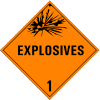
Explosives and substances containing explosives (including 6 subdivided divisions)
flammable gases
Non flammable gases
Toxic gases
Flammable liquids substances
Flammable solid substances
Self reacting substances
Substances which in contact with water emit flammable gases
Ignitable substances
Organic peroxides
Toxic substances
Infectious substances
Radioactive substances
Corrosive substances
Miscellaneous dangerous substances
The applicable system of the USA is the dangerous diamond acc. to NFPA 704



